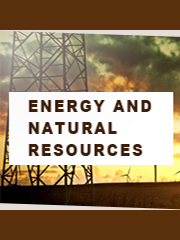Report overview
Hybrid inverters are the heart of a solar energy storage system and enable homes or businesses to increase the amount of self-consumption of solar energy by storing excess energy during the day. 3-phase hybrid inverters work much like a common 3-phase solar inverter but also contain a battery inverter charger and connection. In order to optimise the available energy, hybrid inverters require either an external energy meter or a CT meter, plus onboard software that can be programmed to determine the most efficient use of your available energy. Learn more about hybrid inverters here. While most hybrid inverters have limited surge or peak power output, many of the more powerful 3-phase hybrid inverters shown below can supply a considerable amount of backup power in the event of a blackout. However, unbalanced loads or large single-phase loads may still be limited, so be sure to check the manufacturer?s specifications carefully. Also, note the backup power rating may be limited by either the battery capacity or output power rating.
This report aims to provide a comprehensive presentation of the global market for Three-phase Energy Storage Inverter, with both quantitative and qualitative analysis, to help readers develop business/growth strategies, assess the market competitive situation, analyze their position in the current marketplace, and make informed business decisions regarding Three-phase Energy Storage Inverter. This report contains market size and forecasts of Three-phase Energy Storage Inverter in global, including the following market information:
Global Three-phase Energy Storage Inverter Market Revenue, 2018-2023, 2024-2029, ($ millions)
Global Three-phase Energy Storage Inverter Market Sales, 2018-2023, 2024-2029, (MW)
Global top five Three-phase Energy Storage Inverter companies in 2022 (%)
The global Three-phase Energy Storage Inverter market was valued at US$ 1495.1 million in 2022 and is projected to reach US$ 3225.1 million by 2029, at a CAGR of 11.6% during the forecast period. The influence of COVID-19 and the Russia-Ukraine War were considered while estimating market sizes.
Global key players of Three-phase Energy Storage Inverter include SMA, Power Electronics, Dynapower and Sungrow, etc. Global top four manufacturers hold a share over 60%. Europe is the largest producer of Three-phase Energy Storage Inverter, followed by North America and China.
We surveyed the Three-phase Energy Storage Inverter manufacturers, suppliers, distributors and industry experts on this industry, involving the sales, revenue, demand, price change, product type, recent development and plan, industry trends, drivers, challenges, obstacles, and potential risks.
Total Market by Segment:
Global Three-phase Energy Storage Inverter Market, by Type, 2018-2023, 2024-2029 ($ Millions) & (MW)
Global Three-phase Energy Storage Inverter Market Segment Percentages, by Type, 2022 (%)
Above 30KW
12-30KW
8-12KW
Below 8KW
Global Three-phase Energy Storage Inverter Market, by Application, 2018-2023, 2024-2029 ($ Millions) & (MW)
Global Three-phase Energy Storage Inverter Market Segment Percentages, by Application, 2022 (%)
Utility
Industrial and Commercial
Residential
Global Three-phase Energy Storage Inverter Market, By Region and Country, 2018-2023, 2024-2029 ($ Millions) & (MW)
Global Three-phase Energy Storage Inverter Market Segment Percentages, By Region and Country, 2022 (%)
North America
US
Canada
Mexico
Europe
Germany
France
U.K.
Italy
Russia
Nordic Countries
Benelux
Rest of Europe
Asia
China
Japan
South Korea
Southeast Asia
India
Rest of Asia
South America
Brazil
Argentina
Rest of South America
Middle East & Africa
Turkey
Israel
Saudi Arabia
UAE
Rest of Middle East & Africa
Competitor Analysis
The report also provides analysis of leading market participants including:
Key companies Three-phase Energy Storage Inverter revenues in global market, 2018-2023 (Estimated), ($ millions)
Key companies Three-phase Energy Storage Inverter revenues share in global market, 2022 (%)
Key companies Three-phase Energy Storage Inverter sales in global market, 2018-2023 (Estimated), (MW)
Key companies Three-phase Energy Storage Inverter sales share in global market, 2022 (%)
Further, the report presents profiles of competitors in the market, key players include:
Power Electronics
Dynapower
SMA
Sungrow
SolarEdge
EPC Power
Sinexcel
SolaX Power
GoodWe
Ginlong
Growatt
KOSTAL
SOFARSOLAR
Outline of Major Chapters:
Chapter 1: Introduces the definition of Three-phase Energy Storage Inverter, market overview.
Chapter 2: Global Three-phase Energy Storage Inverter market size in revenue and volume.
Chapter 3: Detailed analysis of Three-phase Energy Storage Inverter manufacturers competitive landscape, price, sales and revenue market share, latest development plan, merger, and acquisition information, etc.
Chapter 4: Provides the analysis of various market segments by type, covering the market size and development potential of each market segment, to help readers find the blue ocean market in different market segments.
Chapter 5: Provides the analysis of various market segments by application, covering the market size and development potential of each market segment, to help readers find the blue ocean market in different downstream markets.
Chapter 6: Sales of Three-phase Energy Storage Inverter in regional level and country level. It provides a quantitative analysis of the market size and development potential of each region and its main countries and introduces the market development, future development prospects, market space of each country in the world.
Chapter 7: Provides profiles of key players, introducing the basic situation of the main companies in the market in detail, including product sales, revenue, price, gross margin, product introduction, recent development, etc.
Chapter 8: Global Three-phase Energy Storage Inverter capacity by region & country.
Chapter 9: Introduces the market dynamics, latest developments of the market, the driving factors and restrictive factors of the market, the challenges and risks faced by manufacturers in the industry, and the analysis of relevant policies in the industry.
Chapter 10: Analysis of industrial chain, including the upstream and downstream of the industry.
Chapter 11: The main points and conclusions of the report.
